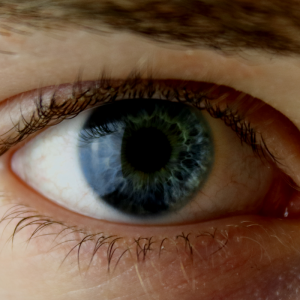- BY Elicia McManus
- POSTED IN Blog
- WITH 0 COMMENTS
- PERMALINK
- STANDARD POST TYPE

Light is about life – it has an impact on how we feel, on our health, and on how we work. Whereas natural light helps us produce vitamin D, and can support a general sense of wellbeing, the evolution of artificial light has caused certain changes in the human body’s dynamics.
There are positives, and unfortunately some negatives, associated with artificial light. As providers of commercial light services, we know that in very many situations, lighting is essential. So, when it comes to lighting solutions, we look for the best kind of artificial lighting that will be a positive support to our customers.
Light has an impact on how we live and work. Here we look at how light affects us all, and what you should consider when choosing how to light a space.
Light and the Body’s Rhythms
Circadian rhythms are our physical, behavioural and mental changes that follow a daily cycle. A simple example is being awake during daylight hours and sleeping at night. This circadian rhythm is light-related. What light does is switch on and off the human genes that govern how our body clocks are built, like a kind of circuit board., with different areas coming alive at different moments.
The crucial thing is, that while the body makes its own circadian rhythms, the environment can also affect them. What medical research has shown is that a change in exposure to light can throw these natural rhythms out of kilter and unbalance our body clocks.
This is a development that has occurred over time, over the past 150 years, as artificial light has played an increasingly prominent role in people’s lives. Less exposure to natural light has changed our circadian rhythms, and increased exposure to certain types of artificial light has also made a lasting impact.
There is a medical opinion that upsetting these natural rhythms has disrupted melatonin and hormone levels, leading to increased health problems, including heart disease and breast cancer, along with fatigue.
Good or Bad Artificial Light?
 Whereas an abundance of natural light is highly desirable in buildings, whether commercial or domestic, it is not always practically possible. How we live, in a modern, fast-moving interconnected world, means that artificial light is an inescapable fact of life. However, the quality of this light can vary, as can its positive or negative impact on us.
Whereas an abundance of natural light is highly desirable in buildings, whether commercial or domestic, it is not always practically possible. How we live, in a modern, fast-moving interconnected world, means that artificial light is an inescapable fact of life. However, the quality of this light can vary, as can its positive or negative impact on us.
For example, fluorescent light is associated with several conditions, including eye strain, migraines, seasonal affective disorder, increased breast cancer rates, damaged immune systems, stress and anxiety.
Fluorescent lights are a common light source in shops, offices and other work environments.
Is there an alternative? Advanced lighting technology is helping businesses reinvent the whole concept of lighting the workspace. There is an increased adoption of LED lighting solutions because they offer a far greater range of alternatives to traditional commercial lighting.
The right lighting solution can make a huge difference to both energy efficiency and to the mood and productivity of people in the workplace.
Lighting for Mood
Lighting affects how we feel. Daylight can cause a spike in serotonin levels and therefore induce feelings of happiness and wellbeing. Conversely, on dark days these same levels can drop, making our moods and emotions more negative in outlook.
It is for these reasons that lighting to create a desirable atmosphere has become a vital part of how commercial spaces such as shops and restaurants are set out.
The same should apply to workspaces. There is plenty of energy being spent on staff engagement and motivation, but often the one key thing that gets missed is lighting. The right kind of commercial light solutions can have a huge impact on staff wellbeing, and on a whole business’s culture, and its productivity.
Shining a Light on Productivity
 Nowadays, we spend more time than ever before in the office, under a variety of lighting conditions. However, while we are spending more time at work, we are not being more productive.
Nowadays, we spend more time than ever before in the office, under a variety of lighting conditions. However, while we are spending more time at work, we are not being more productive.
The productivity puzzle continues to be a key issue for the UK economy. One important thing that can help is smarter working. This means getting the most out of your talented workforce. To do this, employees must feel motivated, energised, and supported in their work.
Excessively bright artificial light and prolonged exposure to it can lead to uneasiness and nervousness. It can become a barrier to concentration. The flipside is working where lighting is insufficient. Dim lights cause eye strain and headaches.
Light is a key component of vision, and vision is responsible for around 85% of how we perceive the world. It is not surprising then, that how a workplace is lit can have an impact on productivity.
What part can commercial light solutions play here? Lighting does not mean one size fits all. Technology has made light solutions much more versatile so that a workspace can have tailored lighting solutions.
What this means is different lighting for different situations.
It makes sense for conference rooms to be lit with mid-tones, producing an inviting, friendly environment, with just enough of an element of cool light to keep people alert and motivated.
More intimate settings may require warmer light tones to engender feelings of trust, security and trust. For other areas, certain types of artificial light can make people feel more alert without causing eye strain.
Focussing on specific areas with task lighting helps eliminate the inefficiencies that come with settling for uniform overhead lighting throughout a workspace. This is how businesses can integrate energy efficiency into a commercial lighting strategy that also puts employees’ wellbeing at the forefront.
Commercial Lighting Solutions
Light is a crucial factor in how people work, and how well they do it. Get in touch with us via our contact page and let us show you options to improve your workspace, ensure the wellbeing of your staff and help boost your productivity.

